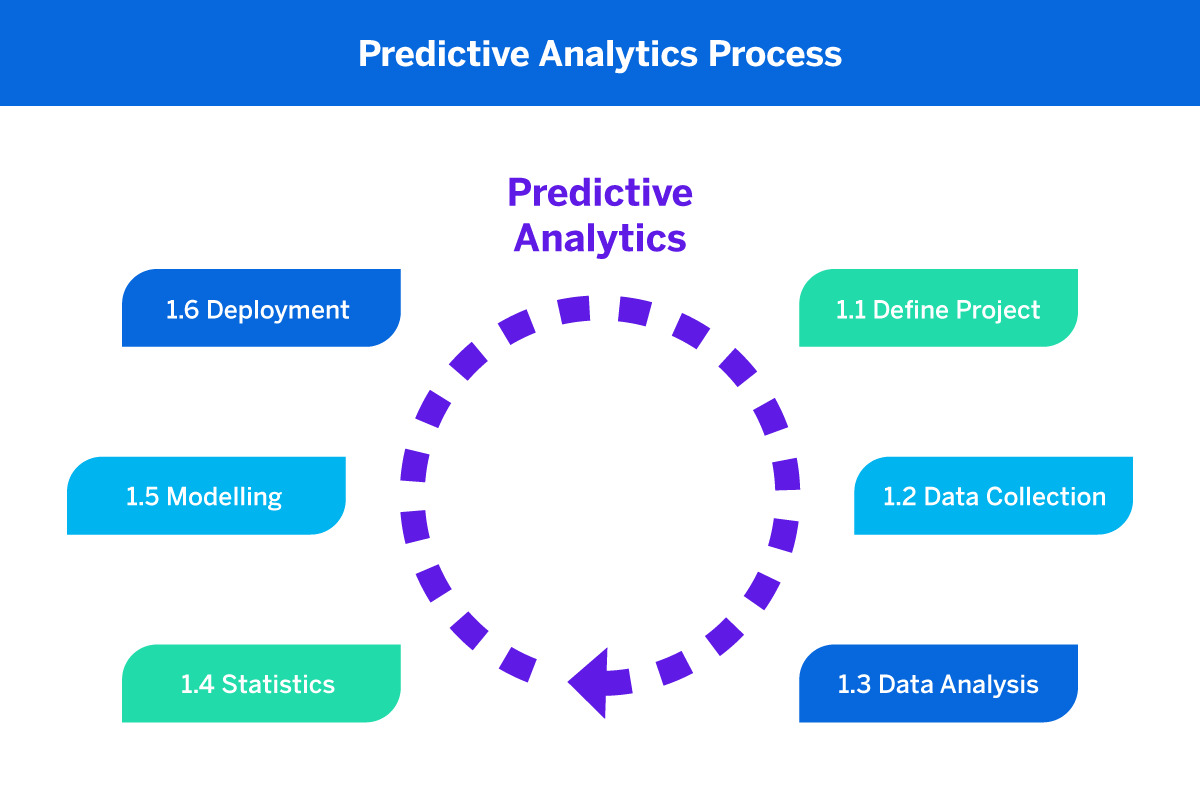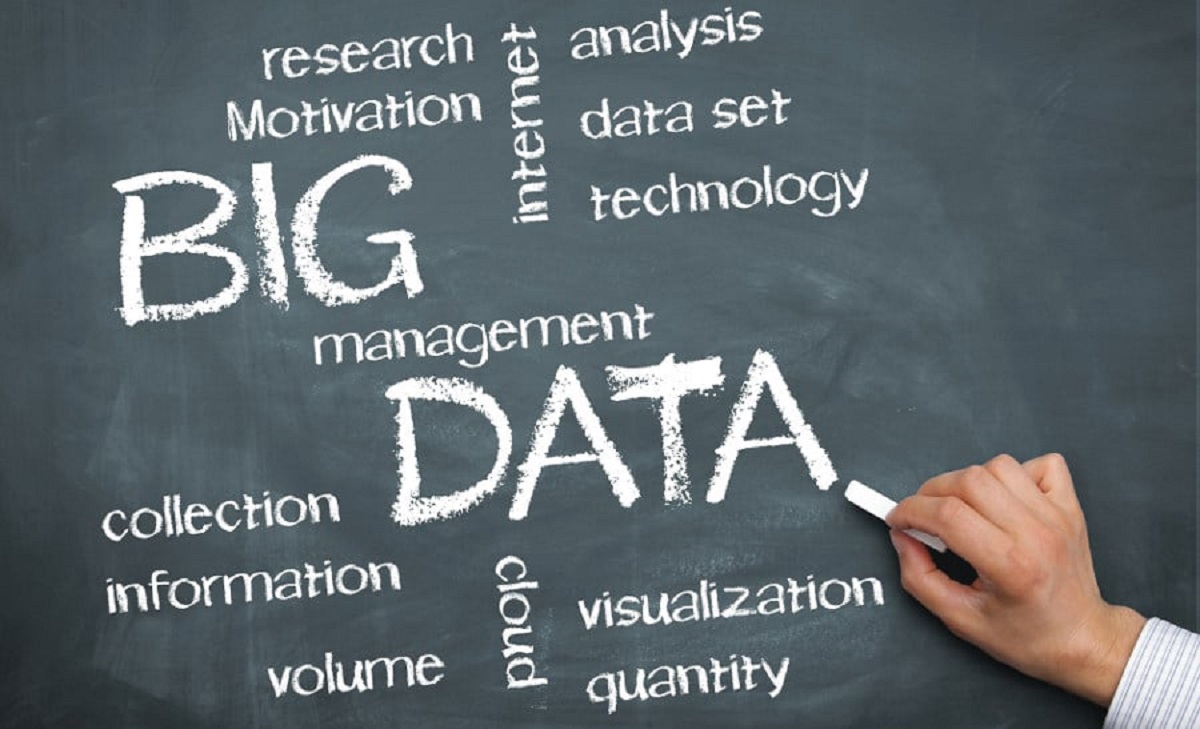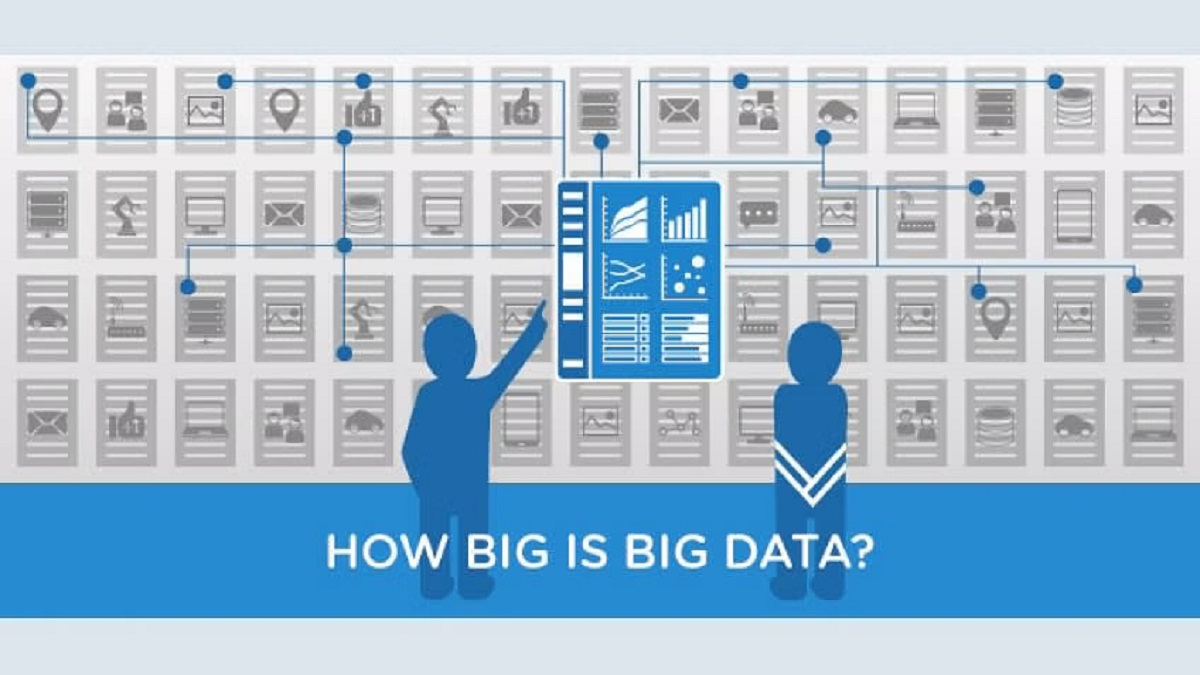Introduction
Predictive marketing has emerged as a game-changer in the digital era, allowing businesses to anticipate customer behavior and tailor their marketing strategies accordingly. At the heart of this revolutionary approach lies big data, which enables companies to gather massive amounts of information to gain valuable insights and make accurate predictions. In this article, we will explore how big data empowers predictive marketing, its benefits, key components, as well as real-world examples and challenges.
Big data refers to the vast and complex datasets that cannot be processed or analyzed using traditional methods. With the advent of technology and the proliferation of online platforms, the amount of data generated by users and systems has reached unprecedented levels. This data includes customer demographics, browsing history, purchasing patterns, social media interactions, and more. Through advanced algorithms and machine learning techniques, businesses can extract valuable nuggets of information from this influx of data.
Predictive marketing leverages this wealth of data to anticipate customer actions and preferences. By analyzing historical data, patterns, and trends, companies can make accurate predictions about individual customer behavior and deliver targeted marketing messages. This proactive approach enhances customer engagement, improves ROI, and fosters long-term customer loyalty.
One of the key benefits of predictive marketing is personalized customer experiences. By understanding customer preferences, businesses can tailor their marketing campaigns to resonate with each individual. This level of customization not only enhances customer satisfaction but also increases the likelihood of conversion and brand advocacy.
Furthermore, predictive marketing allows businesses to optimize their marketing efforts by identifying the most profitable customer segments. By analyzing the data, companies can identify the characteristics and behaviors of high-value customers and focus their resources on acquiring and retaining similar customers. This targeted approach maximizes marketing efficiency and drives more significant revenue growth.
To fully harness the power of predictive marketing, certain key components need to be in place. Firstly, businesses should have a robust data management system that can collect, store, and process large amounts of data efficiently. This system should also ensure data security and compliance with privacy regulations. Additionally, predictive marketing requires advanced analytics tools and technologies that can uncover meaningful patterns and insights from the data.
In the next section, we will delve deeper into the role of big data in enabling predictive marketing and explore the various techniques and strategies involved in this innovative approach to marketing.
What is Big Data
Big data refers to the massive volume, variety, and velocity of data generated in both structured and unstructured formats. It encompasses the vast amounts of information that is produced by individuals, organizations, and systems on a daily basis. What makes big data unique is not just its size, but also its complexity and the need for specialized tools and techniques to extract meaningful insights.
In simple terms, big data is characterized by the 3Vs:
- Volume: Big data is generated in immense quantities. With the digitization of processes and the increased adoption of digital technologies, businesses and individuals are generating and accumulating massive volumes of data.
- Variety: Big data comes in various forms and formats. It includes structured data, such as information stored in databases, as well as unstructured data, such as emails, social media posts, images, videos, and sensor data. This diversity poses a challenge in terms of organizing, analyzing, and making sense of the data.
- Velocity: Big data is generated at a high velocity, often in real-time or near real-time. Social media feeds, clickstream data, and sensor data are examples of data sources that produce a continuous stream of information. The ability to process and analyze data as it is generated enables businesses to make time-sensitive decisions and take immediate actions.
Big data is not just about the quantity and diversity of data but also about the insights and value that can be extracted from it. By utilizing advanced analytics techniques, businesses can uncover hidden patterns, correlations, and trends within the data. These insights can then be used to drive strategic decision-making, optimize operations, and gain a competitive edge.
Traditional data processing tools and technologies are often inadequate when it comes to handling big data. The sheer volume and complexity necessitate the use of specialized tools and techniques, such as distributed computing frameworks like Apache Hadoop and Apache Spark, which are designed to process and analyze big data across a cluster of computers.
Overall, big data represents a significant opportunity for businesses to gain valuable insights and make data-driven decisions. It provides a foundation for predictive analytics, machine learning, and artificial intelligence, enabling businesses to understand customers better, improve operations, and stay ahead in a rapidly changing digital landscape.
How is Big Data Collected
Big data is collected from a multitude of sources, ranging from traditional databases to social media platforms and connected devices. The collection of big data involves collecting, storing, and processing vast amounts of structured and unstructured data in order to extract valuable insights. Here are some of the primary methods and sources of big data collection:
- Transactional Data: This type of data is collected through various business transactions, such as online purchases, customer interactions, and financial transactions. It is typically structured and comes from sources like POS systems, ERP systems, and transactional databases.
- Social Media Data: Social media platforms generate massive amounts of data every second. User posts, comments, likes, shares, and messages are examples of social media data that can provide valuable insights into customer preferences, sentiment, and behavior.
- Web Data: Web data includes information gathered from websites, such as browsing behavior, clickstream data, and form submissions. Web scraping and web analytics tools are commonly used to collect and analyze this type of data.
- Sensor Data: With the proliferation of Internet of Things (IoT) devices, sensor data has become a significant source of big data. Sensors embedded in various devices, such as smart appliances, wearables, and industrial machinery, generate data on temperature, movement, location, and more.
- Mobile Data: Mobile devices, such as smartphones and tablets, generate large volumes of data. This includes location data, app usage patterns, and mobile browsing behavior, which can be utilized for targeted marketing and personalized experiences.
- External Data: Businesses can also collect big data from external sources such as third-party data providers, market research reports, government databases, and public APIs. This data can supplement internal data sources and provide a broader view of customer behavior and market trends.
Collecting big data requires robust data collection mechanisms and infrastructure. This can involve the use of technologies like data integration tools, data pipelines, and data warehouses to consolidate and store the data in a centralized location. Additionally, businesses need to consider data governance, privacy regulations, and security measures to ensure the ethical and responsible handling of the collected data.
Once the big data is collected, it needs to be processed and analyzed to extract meaningful insights. This typically involves data cleaning, transformation, and filtering to remove any noise or inconsistencies. Advanced analytics techniques, such as data mining, machine learning, and natural language processing, are then applied to extract patterns, trends, and correlations from the collected data.
In the next section, we will explore how predictive analytics and marketing leverage big data to make accurate predictions and drive targeted marketing campaigns.
Predictive Analytics and Marketing
Predictive analytics is the practice of using historical and real-time data to make predictions about future events or outcomes. When applied to marketing, predictive analytics allows businesses to anticipate customer behavior, preferences, and needs. By leveraging advanced statistical algorithms and machine learning techniques, businesses can make data-driven predictions and optimize their marketing strategies for better results.
Predictive analytics in marketing involves analyzing vast amounts of data to identify patterns, trends, and relationships that can be used to predict customer actions and preferences. This includes factors such as customer demographics, purchase history, browsing behavior, social media interactions, and more. By understanding these patterns, businesses can tailor their marketing efforts to deliver personalized and targeted messages that resonate with individual customers.
One of the key applications of predictive analytics in marketing is lead scoring. Lead scoring is the process of assigning a numerical value to leads based on their likelihood of converting into customers. By analyzing past data on lead characteristics, behavior, and interactions with the brand, businesses can prioritize and allocate resources to the most promising leads, increasing the efficiency of their sales and marketing efforts.
Another application of predictive analytics in marketing is churn prediction. Churn refers to the loss of customers or users. By analyzing historical data on customer behavior, purchase history, and engagement metrics, businesses can identify early warning signs of potential churn and take proactive measures to retain those customers. This may involve targeted offers, personalized communications, or loyalty programs to incentivize continued engagement.
Predictive analytics also plays a crucial role in segmentation and targeting. Instead of relying on broad customer segments, businesses can use predictive models to create micro-segments based on specific characteristics and behaviors. This allows for highly personalized marketing messages and offers that are tailored to individual customer needs and preferences.
Additionally, predictive analytics can help optimize marketing campaigns by forecasting the expected outcomes and ROI of different marketing initiatives. By analyzing past campaign performance and external factors such as market trends and competitor activities, businesses can make data-driven decisions on budget allocation, channel selection, and message optimization.
Overall, predictive analytics in marketing enables businesses to be proactive and strategic in their marketing efforts. By leveraging the power of big data and advanced analytics techniques, businesses can make accurate predictions, enhance customer experiences, optimize marketing campaigns, and ultimately drive better results and ROI.
Benefits of Predictive Marketing
Predictive marketing offers numerous benefits for businesses aiming to stay ahead in the competitive landscape. By leveraging advanced analytics and machine learning techniques, businesses can gain valuable insights and optimize their marketing strategies for improved results. Here are some key benefits of predictive marketing:
- Increased Marketing Efficiency: Predictive marketing enables businesses to allocate their marketing resources more effectively. By identifying the most profitable customer segments and targeting them with personalized messages, businesses can optimize their marketing efforts and increase conversion rates.
- Improved Customer Segmentation: Instead of using generic customer segments, predictive marketing allows businesses to create micro-segments based on specific characteristics and behaviors. This level of segmentation leads to more personalized and targeted marketing messages, resulting in higher engagement and customer satisfaction.
- Enhanced Customer Experience: Predictive marketing enables businesses to deliver highly personalized experiences to customers. By understanding individual preferences, needs, and behaviors, businesses can tailor their marketing messages and offers to provide relevant and timely content, leading to improved customer satisfaction and loyalty.
- Better Lead Generation and Conversion: Predictive lead scoring helps businesses prioritize leads based on their likelihood of conversion. By focusing on high-quality leads, businesses can optimize their sales efforts and increase their conversion rates. This helps save time and resources by concentrating efforts on leads that are more likely to convert into customers.
- Reduced Churn and Improved Retention: Predictive analytics can help identify customers who are at risk of churn. By understanding churn patterns and early warning signs, businesses can take proactive measures to retain those customers. Targeted offers, personalized communications, and loyalty programs can be implemented to incentivize continued engagement.
- More Effective Cross-Selling and Upselling: Predictive marketing enables businesses to identify cross-selling and upselling opportunities. By analyzing customer data, businesses can identify additional products or services that are relevant to their customers’ needs and preferences. This can lead to increased sales and higher customer lifetime value.
- Optimized Marketing Budget Allocation: Predictive analytics can help businesses forecast the expected outcomes and ROI of different marketing initiatives. This allows for more informed decision-making when allocating marketing budgets across channels and campaigns. By investing resources in the most effective strategies, businesses can maximize their marketing ROI.
By leveraging predictive marketing, businesses can gain a competitive edge in the market. The ability to anticipate customer behavior, personalize experiences, and optimize marketing efforts leads to increased customer satisfaction, loyalty, and revenue growth.
Key Components of Predictive Marketing
Predictive marketing relies on several key components that work together to enable accurate predictions and targeted marketing strategies. These components involve data, technology, and analytics capabilities. Here are the essential elements of predictive marketing:
- Data Collection and Integration: The foundation of predictive marketing is robust data collection and integration. This involves gathering data from various sources, such as customer interactions, website behavior, purchase history, and demographic information. The collected data needs to be organized, unified, and integrated into a central data repository for comprehensive analysis.
- Data Storage and Management: Efficient data storage and management are crucial for predictive marketing. Big data requires advanced storage solutions, such as data warehouses or data lakes, to handle the vast amount of information. Businesses also need to ensure data quality, security, and compliance with relevant regulations.
- Data Cleaning and Preprocessing: Before analysis can be performed, the collected data needs to be cleaned and preprocessed. This involves removing duplicates, handling missing values, standardizing formats, and resolving inconsistencies. Data preprocessing ensures that the data is ready for accurate analysis and modeling.
- Advanced Analytics Tools and Technology: Predictive marketing relies on advanced analytics tools and technology to extract insights from the data. This includes statistical analysis software, machine learning algorithms, and predictive modeling techniques. These tools help businesses identify patterns, correlations, and trends within the data to make accurate predictions.
- Predictive Modeling: Predictive modeling involves developing mathematical models that can make predictions based on historical and real-time data. These models use algorithms and statistical techniques to analyze the data and generate insights. Predictive models can be used for lead scoring, churn prediction, customer segmentation, and campaign optimization.
- Machine Learning and Artificial Intelligence: Machine learning and artificial intelligence play a vital role in predictive marketing. These technologies enable computers to learn patterns and make predictions without being explicitly programmed. Machine learning algorithms are applied to large datasets to uncover hidden patterns and generate predictive models.
- Testing and Validation: It is crucial to test and validate predictive models to ensure their accuracy and effectiveness. This involves dividing the data into training and testing sets and evaluating the model”s performance against known outcomes. Regular validation and refinement of models help to improve their predictive power over time.
- Continuous Monitoring and Optimization: Predictive marketing is an ongoing process that requires continuous monitoring and optimization. Changes in customer behavior and market dynamics may require the updating and recalibration of predictive models. Ongoing monitoring allows businesses to identify any deviations and make necessary adjustments to their marketing strategies.
By leveraging these key components, businesses can harness the power of predictive marketing to gain valuable insights, make accurate predictions, and deliver targeted marketing campaigns that resonate with their customers.
Role of Big Data in Predictive Marketing
Big data plays a crucial role in enabling predictive marketing strategies. By harnessing the vast amount of data generated by customers and systems, businesses can extract valuable insights and make accurate predictions about customer behavior, preferences, and needs. Here are key ways in which big data contributes to predictive marketing:
- Data Volume and Variety: Big data provides a vast volume and variety of data that can be analyzed to gain a comprehensive understanding of customers. This includes structured data from transactions and databases, as well as unstructured data from social media, emails, and other sources. The availability of a large and diverse dataset enhances the accuracy and reliability of predictive models.
- Identifying Patterns and Trends: Big data allows businesses to analyze historical data and identify patterns and trends in customer behavior. By analyzing large datasets, businesses can detect correlations, spot emerging trends, and infer context to make predictions about future customer actions. This empowers businesses to deliver personalized and targeted marketing campaigns.
- Real-Time Data: Big data includes real-time data, which provides up-to-date insights into customer behavior. By capturing and analyzing real-time data from sources such as social media, website interactions, and IoT devices, businesses can make immediate adjustments to their marketing strategies. This agility enables businesses to respond to trends and customer preferences quickly.
- Behavioral Analysis: Big data allows businesses to perform deep behavioral analysis of customers. By analyzing data on browsing patterns, purchase history, and interactions with the brand, businesses can understand customer preferences, anticipate needs, and deliver personalized experiences. This drives customer engagement, loyalty, and conversions.
- Customer Segmentation: Big data enables businesses to create more granular customer segments based on comprehensive data analysis. These segments can be dynamically updated and refined based on real-time customer data, resulting in more accurate and effective targeting. This segmentation helps businesses tailor their marketing strategies to different customer groups, maximizing the impact of their marketing efforts.
- Improved Predictive Models: The availability of big data allows for the development of more accurate and sophisticated predictive models. By training predictive models on large and diverse datasets, businesses can capture the complex relationships and dependencies between various factors and customer behavior. This leads to more reliable predictions and better decision-making.
- Marketing Attribution: Big data enables businesses to measure the impact and effectiveness of different marketing initiatives. By analyzing data on various marketing channels, customer touchpoints, and conversion paths, businesses can attribute sales and conversions to specific marketing campaigns and activities. This insight helps optimize marketing budgets and resource allocation.
By leveraging big data, businesses can gain a comprehensive understanding of customer behavior, improve the accuracy of predictive models, and deliver targeted marketing initiatives. The availability of vast and diverse data empowers businesses to make data-driven decisions and stay ahead in a highly competitive market.
Data Collection for Predictive Marketing
Data collection is a critical component of predictive marketing, as accurate and reliable data is essential for making accurate predictions and driving targeted marketing strategies. Here are key aspects of data collection for predictive marketing:
- Data Sources: Businesses collect data from various sources to fuel their predictive marketing efforts. These sources include customer interactions, website behavior, social media interactions, transactional data, customer surveys, and more. It is important to identify and capture the relevant data that provides insights into customer preferences, behaviors, and needs.
- Data Integration: Data integration is the process of consolidating and combining data from different sources into a unified view. This ensures that data is organized and linked correctly, allowing for comprehensive analysis. Integration can be achieved through data consolidation tools, data pipelines, or data integration platforms.
- Data Quality: High-quality data is essential for accurate predictions. Data collected for predictive marketing should be accurate, complete, consistent, and free from errors. It is important to validate and clean the data to remove any duplicates, inconsistencies, or irrelevant information. Constant monitoring and maintenance of data quality ensure the effectiveness of predictive models.
- Data Privacy and Security: Collecting and storing customer data requires adherence to privacy regulations and the implementation of proper security measures. Businesses must obtain necessary consent, encrypt sensitive information, and comply with relevant privacy laws to protect customer data. Maintaining robust data privacy and security practices fosters trust with customers and protects their personal information.
- Data Governance: Data governance involves the establishment of policies, processes, and controls for managing and using data effectively. Businesses need to have a well-defined data governance framework in place to ensure proper data collection, usage, and maintenance. This includes defining roles and responsibilities, addressing data ownership, and implementing data governance tools and technologies.
- Data Enrichment: Data enrichment involves enhancing the collected data with additional information to gain deeper insights. This can involve appending demographic data, purchasing habits, or psychographic data to customer profiles. Data enrichment enhances the predictive modeling process by offering a more comprehensive view of customers and enabling more accurate predictions.
- Real-Time Data Collection: Real-time data collection allows businesses to capture and analyze data as it is generated. This provides up-to-date insights into customer behavior and allows for immediate actions. Real-time data collection can be achieved by integrating with real-time data streams, leveraging IoT devices, or using tools that capture customer interactions in real-time.
- Data Analysis and Modelling: Data collection for predictive marketing goes hand in hand with data analysis and modeling. Once the data is collected, it needs to be analyzed using statistical techniques, machine learning algorithms, and predictive modeling to uncover patterns, correlations, and trends. This analysis enables businesses to generate accurate predictions and insights for their marketing strategies.
Overall, successful data collection for predictive marketing requires a comprehensive and systematic approach. By collecting accurate and relevant data, implementing proper data governance, and ensuring data quality and security, businesses can make informed decisions based on accurate predictions and drive targeted and impactful marketing campaigns.
Predictive Modeling Techniques
Predictive modeling techniques play a crucial role in predictive marketing by enabling businesses to make accurate predictions about customer behavior and make data-driven decisions. These techniques leverage statistical algorithms and machine learning algorithms to analyze historical and real-time data and generate predictive models. Here are some commonly used predictive modeling techniques in predictive marketing:
- Regression Analysis: Regression analysis is a statistical technique used to predict numerical outcomes based on the relationship between independent variables. It calculates the best-fitting line or curve that represents the relationship between the variables. Regression models are commonly used for forecasting customer lifetime value, sales predictions, and revenue predictions.
- Classification models: Classification models are used to predict categorical variables, such as customer segments or churn/non-churn. Techniques like logistic regression, decision trees, and random forests are often employed to classify customers into different segments or predict whether a customer is likely to churn or not. These models help businesses effectively target their marketing efforts based on customer characteristics.
- Cluster Analysis: Cluster analysis is used to group similar objects or customers together based on their attributes and behaviors. This technique helps identify customer segments with similar characteristics and preferences. By understanding these segments, businesses can tailor their marketing strategies to address the specific needs and preferences of each group.
- Time Series Analysis: Time series analysis is used to predict future values based on historical data points that are recorded over regular intervals of time. This technique is valuable in forecasting time-dependent variables such as sales trends, website traffic, and customer behavior. It helps identify patterns and seasonality in data, enabling businesses to make accurate predictions related to time-dependent processes.
- Neural Networks: Neural networks are a type of machine learning algorithm inspired by the human brain’s structure and functioning. They are used to model complex relationships in data and make predictions. Neural networks consist of interconnected nodes (neurons) that process and transmit information. They are particularly useful in image recognition, natural language understanding, and sentiment analysis.
- Collaborative Filtering: Collaborative filtering is a technique used in recommendation systems to predict customer preferences and make personalized recommendations. It analyzes historical data on customer behavior, such as product purchases or ratings, and identifies similar customers or items based on their behavior. Collaborative filtering helps in understanding customer preferences and making relevant product recommendations.
- Ensemble Methods: Ensemble methods combine multiple predictive models to make more accurate predictions. Techniques such as bagging, boosting, and stacking are used to leverage the strengths of different models and reduce bias or variance in predictions. Ensemble methods are valuable when dealing with complex or noisy data and can lead to improved predictions and performance.
These predictive modeling techniques enable businesses to make accurate predictions about customer behavior, preferences, and needs. By implementing these techniques, businesses can optimize their marketing strategies, allocate resources effectively, and deliver personalized experiences that resonate with their target audience.
Real-World Examples of Predictive Marketing
Predictive marketing has been successfully implemented in various industries, driving significant improvements in customer engagement, sales, and revenue. Here are some real-world examples of how businesses have leveraged predictive marketing:
- Amazon: Amazon, the e-commerce giant, is a prime example of how predictive marketing can drive personalized customer experiences. By analyzing customer browsing and purchase history, Amazon uses predictive analytics to make accurate product recommendations and provide personalized product suggestions. This targeted approach has led to increased customer engagement, higher conversion rates, and improved customer satisfaction.
- Netflix: Netflix uses predictive marketing to enhance its content recommendation engine. By analyzing user viewing history, viewing habits, and ratings, Netflix leverages predictive modeling techniques to suggest personalized content to its customers. This has resulted in improved customer retention, increased user engagement, and a better overall viewing experience.
- Spotify: Spotify, the music streaming platform, utilizes predictive marketing to create personalized playlists for its users. By analyzing user listening patterns, preferences, and data on similar users, Spotify generates customized playlists that suit individual tastes. This personalized approach has contributed to increased user satisfaction, longer listening sessions, and reduced churn rates.
- Starbucks: Starbucks utilizes predictive marketing to optimize its loyalty program and drive customer engagement. By analyzing customer purchase history, preferences, and payment data, Starbucks can offer tailored promotions and discounts to its customers. This personalized marketing approach has resulted in increased customer loyalty, higher sales, and improved customer experiences.
- Retail Industry: Many retailers leverage predictive marketing to optimize their inventory management and pricing strategies. By analyzing historical sales data, market trends, and customer behavior, retailers can forecast the demand for specific products and adjust their inventory levels accordingly. This helps minimize stockouts, reduce excess inventory, and optimize pricing to maximize profit margins.
- Banking and Financial Services: Banks and financial institutions use predictive marketing to identify potential high-value customers and personalize their offers. By analyzing customer data, including transaction history, creditworthiness, and demographic information, banks can identify customers who are most likely to respond positively to certain offers or cross-selling opportunities. This targeted approach helps improve customer satisfaction and drive higher revenue.
- Healthcare Industry: Predictive marketing has also found applications in the healthcare industry. Healthcare providers analyze patient data, electronic health records, and demographic information to predict patient outcomes, disease progression, and potential health risks. Predictive modeling helps healthcare organizations identify individuals who are at high risk for certain conditions and implement preventive measures or targeted interventions.
These real-world examples highlight the effectiveness of predictive marketing in driving customer engagement, personalization, and overall business success. By leveraging advanced analytics and predictive models, businesses across industries can gain a competitive advantage and deliver exceptional customer experiences.
Challenges and Limitations of Predictive Marketing
While predictive marketing offers significant benefits, there are several challenges and limitations that businesses need to consider. These challenges can impact the accuracy and effectiveness of predictive models and require careful attention and mitigation strategies. Here are some of the key challenges and limitations of predictive marketing:
- Data Quality and Availability: The accuracy and reliability of predictive models heavily depend on the quality and availability of data. Poor data quality, such as incomplete or inconsistent data, can lead to inaccurate predictions. Additionally, access to relevant and comprehensive data can be a challenge, especially for businesses operating in highly regulated industries or those with limited data sources.
- Data Privacy and Ethics: With the increasing focus on data privacy and ethical considerations, businesses need to navigate the challenges of collecting and using customer data responsibly. Privacy regulations, such as the General Data Protection Regulation (GDPR), demand strict compliance when collecting and processing personal data. Businesses need to establish transparent data practices, ensure proper consent, and implement robust security measures to protect customer information.
- Algorithmic Bias: Predictive models are only as accurate as the data they are trained on. If the training data is biased, it can lead to biased predictions and unfair outcomes. Bias can arise due to historical imbalances in the data or unintended correlations that may perpetuate societal biases. Businesses must carefully examine and address potential biases in their predictive models to ensure fairness and equity.
- Model Interpretability: Predictive models can be complex and difficult to interpret, especially when leveraging advanced machine learning algorithms. Lack of interpretability can hinder businesses from understanding the reasons behind certain predictions and making informed decisions. Ensuring transparency and interpretability in predictive models is crucial, especially in regulated industries or when sensitive decisions are being made based on the predictions.
- Changing Customer Behavior: Customer behavior is constantly evolving, and predictive models may struggle to keep up with rapid changes. Sudden shifts in customer preferences, market dynamics, or external factors can impact the accuracy of predictive models. Continuous monitoring and recalibration of models are necessary to adapt to changing customer behavior and ensure the predictions remain relevant.
- Overfitting and Generalization: Overfitting occurs when a predictive model is too closely fitted to the training data, resulting in poor performance on new, unseen data. It is important to strike a balance between model complexity and generalization. Overcomplicated models may perform well on the training data, but fail to generalize to new data. Regular validation and testing of models can help mitigate the risk of overfitting.
- Data Security and Infrastructure: Handling and analyzing big data requires robust data infrastructure and security measures. Businesses need to invest in scalable storage solutions, data processing technologies, and ensure data security to protect against data breaches or unauthorized access. Building and maintaining a secure data infrastructure can be complex and costly.
Despite these challenges and limitations, businesses can overcome them through careful implementation, proper data management, and ongoing monitoring and validation of predictive models. By addressing these challenges, businesses can unlock the full potential of predictive marketing and drive better outcomes.
Conclusion
Predictive marketing, powered by big data and advanced analytics, has revolutionized the way businesses approach their marketing strategies. By leveraging vast amounts of data and predictive modeling techniques, businesses can make accurate predictions about customer behavior, preferences, and needs, enabling them to deliver personalized and targeted marketing campaigns.
The key components of predictive marketing, including data collection, integration, analysis, and modeling, work together to provide businesses with valuable insights and actionable predictions. Real-world examples across industries demonstrate the effectiveness of predictive marketing in enhancing customer engagement, driving revenue growth, and improving business outcomes.
However, predictive marketing also comes with its own set of challenges and limitations. Ensuring data quality, addressing algorithmic bias, maintaining data privacy and security, and staying vigilant to changing customer behavior are critical considerations for businesses implementing predictive marketing strategies. Overcoming these challenges requires careful data management, ongoing monitoring, and continuous improvement of predictive models.
Despite the challenges, the benefits of predictive marketing are evident. Businesses can optimize their marketing efforts, allocate resources effectively, and deliver personalized experiences that resonate with customers. Predictive marketing provides a competitive advantage by leveraging data-driven insights to make informed decisions and drive positive customer experiences and business outcomes.
As technology continues to advance and data becomes increasingly abundant, the potential for predictive marketing will only grow. By harnessing the power of big data and applying predictive modeling techniques, businesses can stay ahead of the competition, provide exceptional customer experiences, and achieve long-term success in a data-driven world.

























